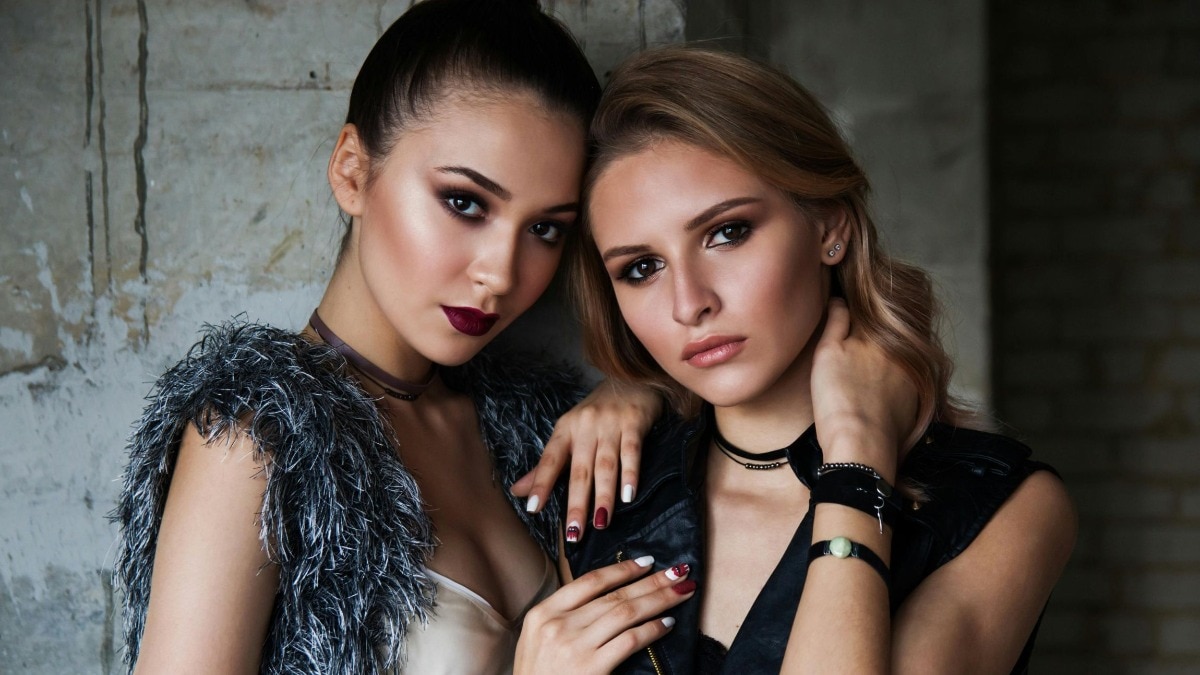Why are petite women still being ignored by the fashion industry?
More than half of women measure under 5ft 3ins, yet virtually no luxury labels cater to them. Now, a new brand is hoping to change that.


The lack of size diversity in the fashion industry continues to be a far-reaching and much talked-about problem. Statistics are being furiously shared across social media detailing how badly each fashion capital fared this past month in terms of featuring a diverse range of sizes on the catwalk. The tendency of most houses to use tall, slender women to show off their new collections is a problem as old as fashion itself—and, while there has been much talk about body positivity and brands ‘doing better’ over the past decade, the truth is that the majority of fashion labels include just a few token models to tick a box. Many don’t even bother to do that. According to a recent report, the number of mid-size and plus-size models on the catwalks declined by 24 per cent in comparison to last season. It is a dire situation—but at least it is being talked about. The same cannot be said for the issues around clothing and representation for women who are classed as petite, i.e. those who are under 5ft 3ins.
“Petite women are a widely disregarded cohort despite half of the world’s female population measuring under 5ft 3ins,” says Liza Belmonte, the founder of Kjinsen, a luxury fashion label that is catering to exactly this market. Measuring 5ft herself, the designer has—as all petite women do—found herself constantly frustrated and disheartened by the lack of options available to shorter women. She has always struggled to find clothes that actually fit her body, she says, and this is a particular problem if you're looking for clothing in the luxury market. It's an even bigger problem if you do not have a slender frame.
“Up until now, the feeling of having a garment pulled off the rack and fitting me perfectly without extensive alterations was practically foreign to me,” Belmonte tells me. “I do not have the typical ‘petite’ body, so lines that do exist—which are usually only from fast-fashion brands (who have the scale to produce wider ranges)—do not fit me either; they are for slender, petite women.
“It is so much more than just the hems of sleeves and trouser legs being too long—for clothes to fit, they need to be engineered to the proportions of our bodies.”
Of course, Belmonte knew that she was far from alone in feeling isolated from the fashion industry, but even she was surprised with the response that met her when she took to social media to discuss some of these issues.
“I began to build a community of women on TikTok who I was engaging with in conversations about the experience of getting dressed,” she recalls. “I was candid about my own life-long frustration as a 5ft woman myself, and one that does not have the typical body that has become associated with the term ‘petite’. The response I got was astounding.
“Countless women shared stories that were very similar to mine and it opened my eyes to how big a problem it really was; financially, women were spending so much money on getting items tailored, and emotionally, women were disheartened and lacking confidence as a result of getting dressed.”
Belmonte initially launched Kjinsen in 2021 as a ‘straight-sized’ brand, but this experience—coupled with the response she received on social media—encouraged her to pivot, and start again from scratch.
“When I created my debut collection, I felt incredibly limited by the sizing implications of the existing development process. Traditionally, garments are fitted onto the same model throughout the whole process; a model who is usually 5ft 10ins and slender, and therefore the clothes created are made for a specific body type. This cookie-cutter approach did not sit right with me, and I kept thinking that there had to be a better way.”
There is so much that goes into creating clothes for different sizes, Belmonte explains, which is part of the reason that real, genuine size diversity is such a sticking point for fashion brands.
“Designing for a shorter frame requires a different set of patterns, measurements and grading rules as the ones used for straight-sized clothing. This is why you never see short models on the runway—it would require a brand to go through a completely separate development process just to dress that one model. It doesn’t simply come down to cropping the length of a hem; the proportions need to be right. To extend their sizing—and do it properly—it means increased complexity, longer development times, and multiple rounds of sampling, and with this comes a tremendous amount of extra costs.”
Other roadblocks exist too, Belmonte points out, like even the most qualified and talented pattern cutters and garment technologists not being used to working with different body types. And then, there are very few working petite models.
“When we were catering to the straight-sized market, we were booking models through some of the top agencies in London. When we pivoted and I reached out to book shorter models for fittings and shoots, over half a dozen of them came back saying they did not have a single model under 5ft 5ins on their boots, and most did not have one under 5ft 7ins. Those who had any, tended to just have one.”
Belmonte therefore decided to use friends and family members in the process instead, and this allowed her to fit the collection properly. The clothes will cater to a UK size four and up to a size 20, and have been designed around the proportions of women 5ft 4in and under: “It enabled us to test the fit on a diverse range of body types, from slimmer frames to wider hips and fuller busts.” She even used her sisters in the campaign.
The debut collection—which she describes as “a contemporary expression of femininity”—is made up of 11 pieces, designed to cater to the modern woman. It features power suits in wool and cashmere, silk organza dresses, and charcoal-toned denim, all created naturally (no synthetic dyes are used), to a high quality and designed to be worn forever.
Of course, this is the first collection, and therefore just the beginning for Kjinsen, but Belmonte is already using her growing TikTok community for feedback and to help decide what she might do next (“I know we’ll have an oversized blazer and jeans in the next collection because these are two items these women have expressed are particularly hard to find when you’re shorter.”) She wants to listen to this community and cater to what they need. She wants them to feel seen by the fashion industry in a way she never was.
“Shorter women have been excluded from the inclusivity conversation and are not catered to by brands. I want to give our customer a premium option where the highest standards of techniques and fabrics have been applied to celebrate their silhouette specifically.
“I want them to feel spoiled and seen with this brand. Instead of shorter women being relegated to a small corner of high-street stores, or to multiple trips to the tailor, I want to remove that notion that these women are an afterthought. With Kjinsen, they are the focal point and the purpose of everything we create.”
This piece originally appeared in Harper's Bazaar UK










